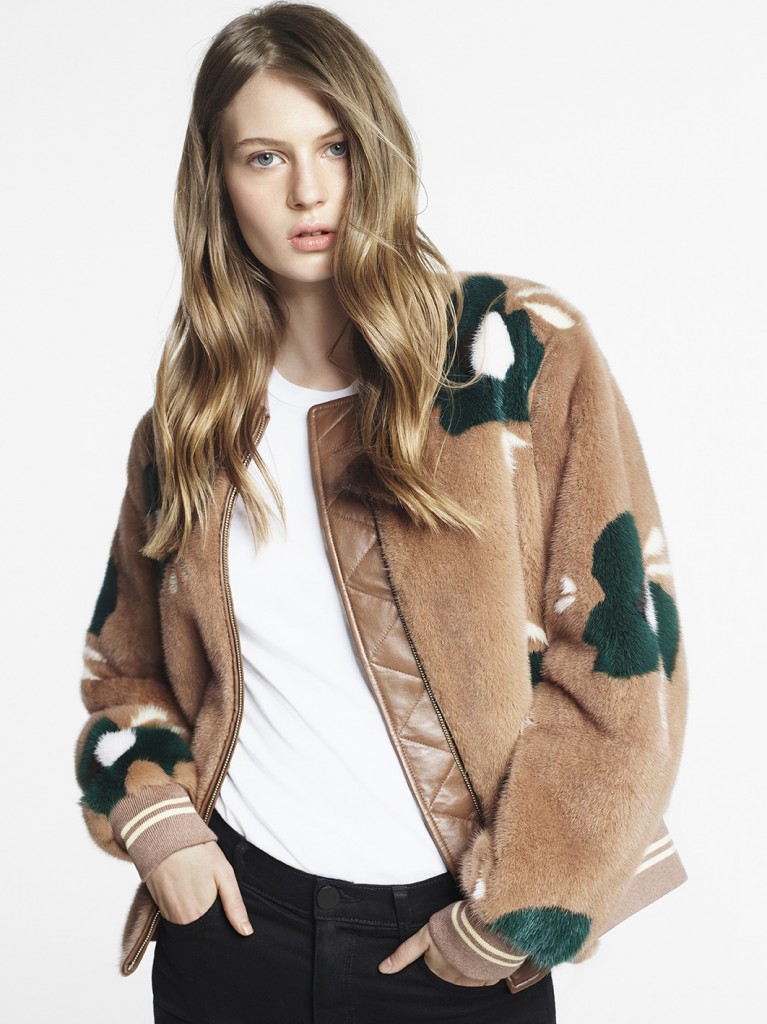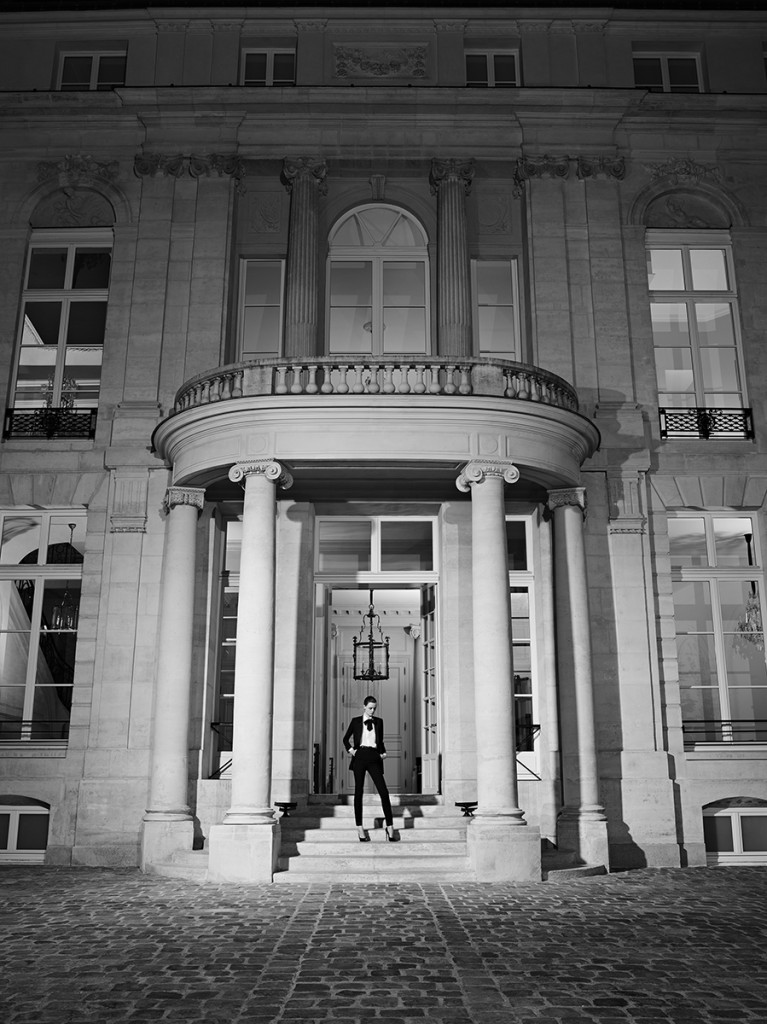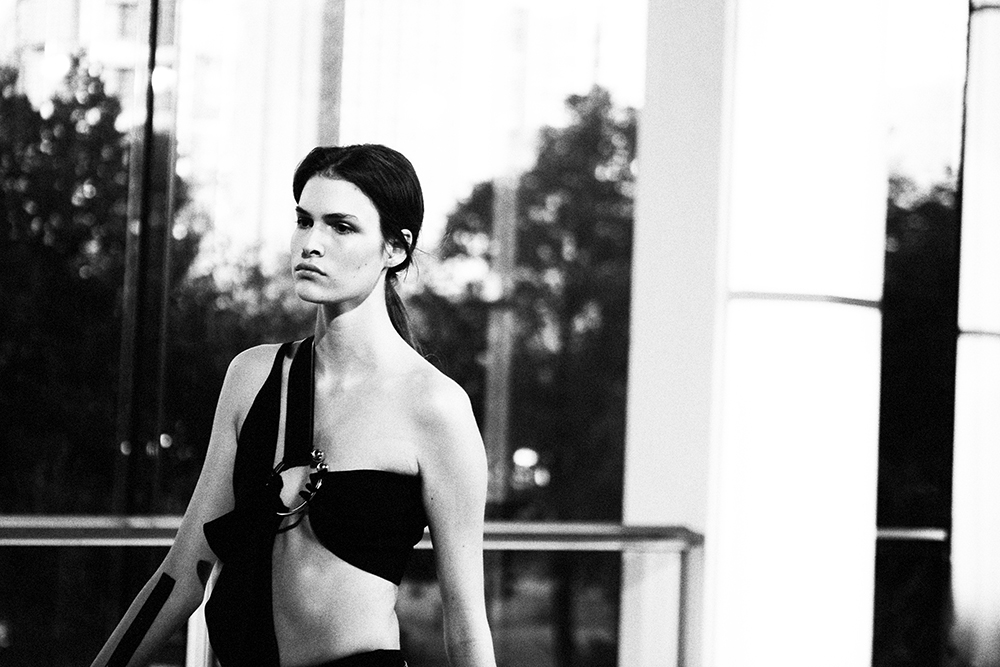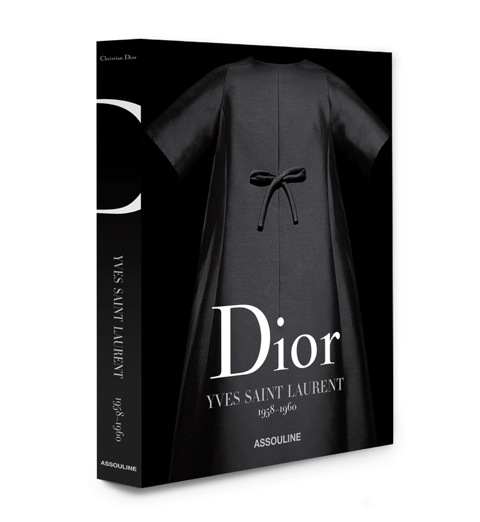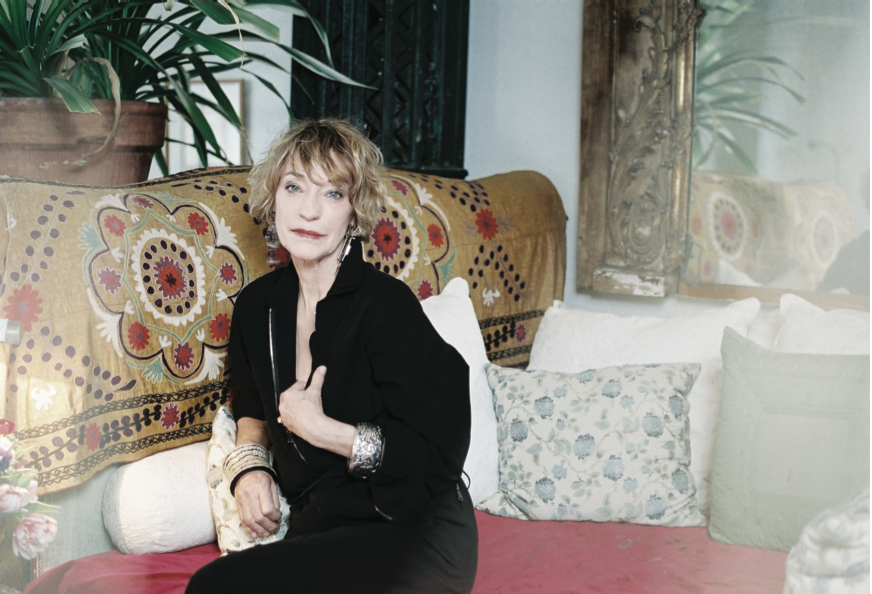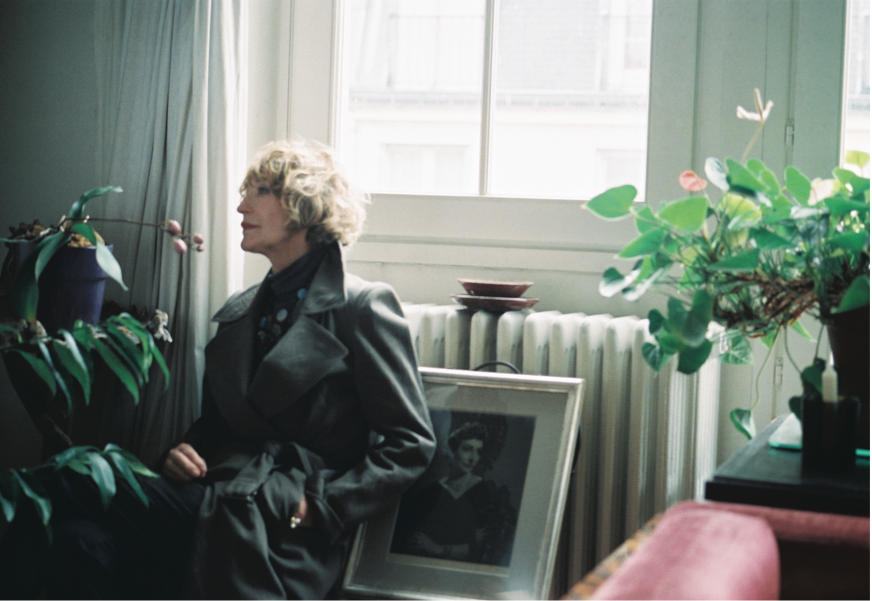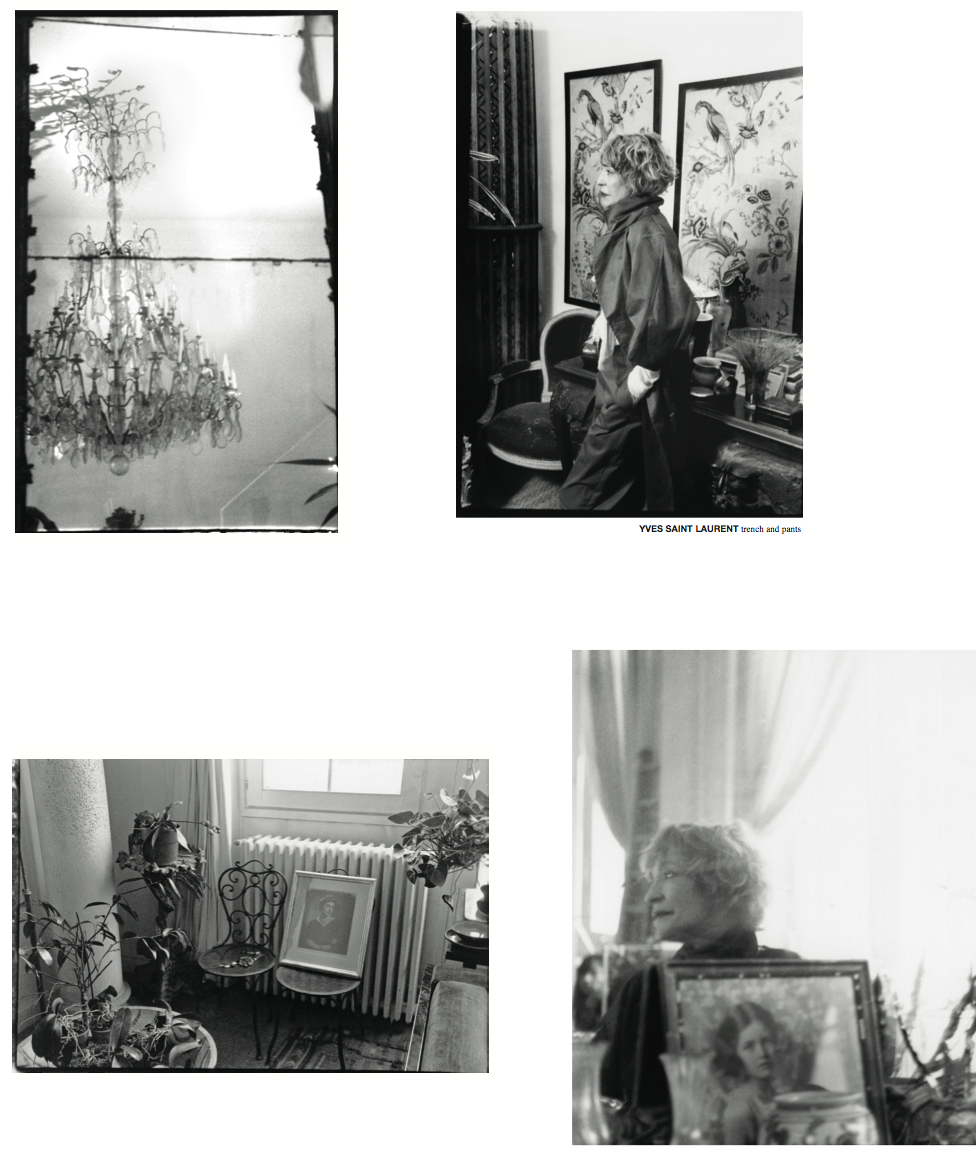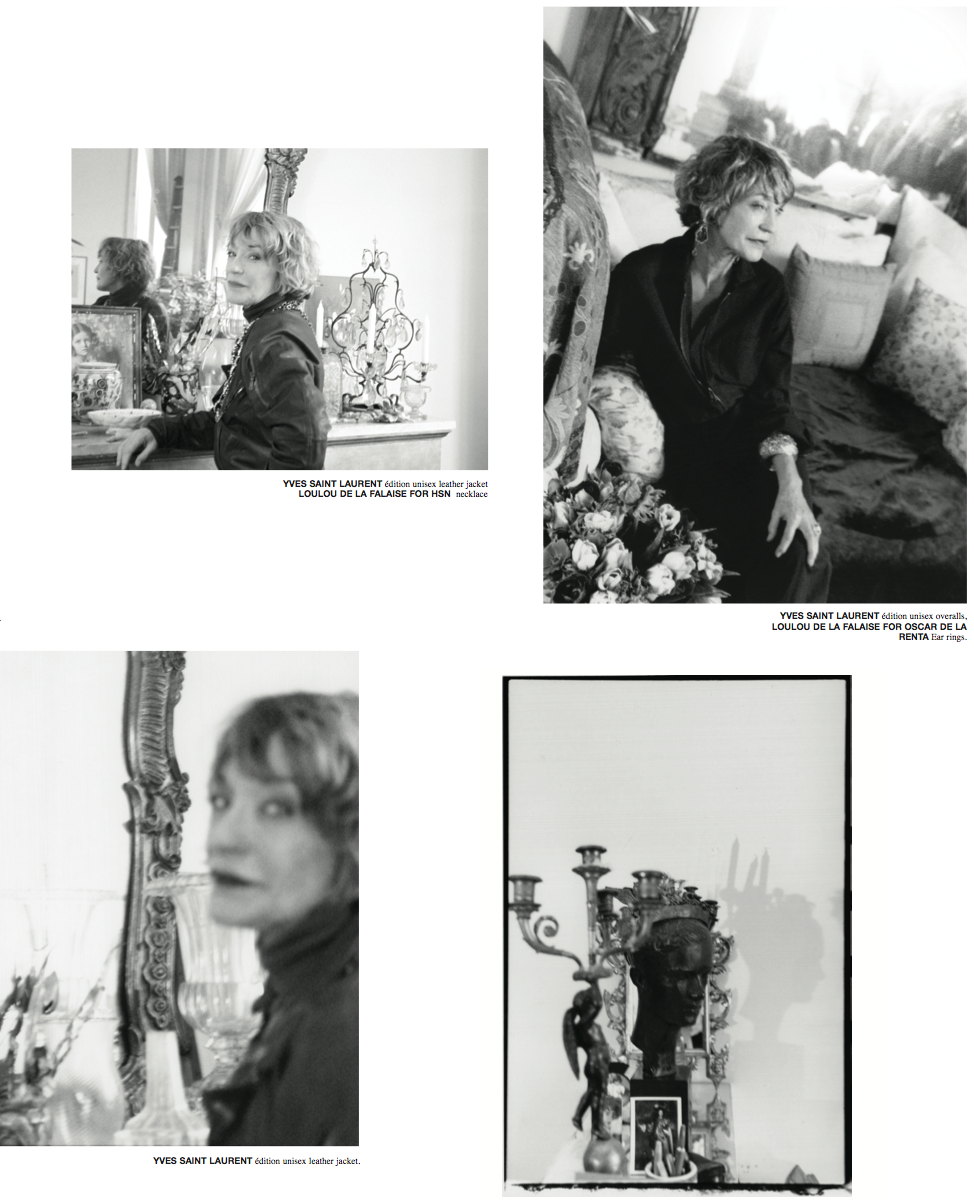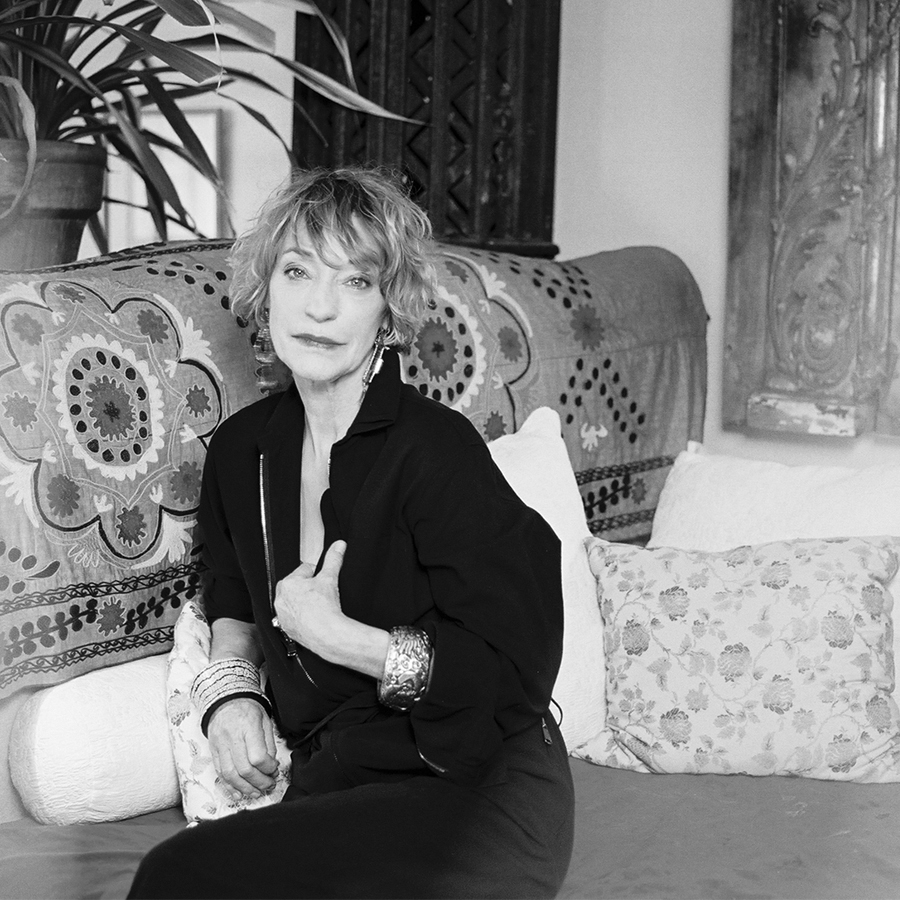
LOULOU DE LA FALAISE ON CONTINUITY
By Crash redaction
WITH HER VOICE FULL OF MYSTERY, BOHEMIAN STYLE, AND LOVE FOR ARTISANAL WORK, LOULOU DE LA FALAISE, THE MUSE AND CREATIVE ASSISTANT OF YVES SAINT LAURENT WHO NOW RUNS HER OWN LABEL, RADIATES THE OPTIMISM OF THOSE WHOM LIFE HAS TREATED WELL. RECENTLY IN NEW YORK TO PRESENT THE JEWELRY COLLECTION SHE DESIGNED FOR OSCAR DE LA RENTA, LOULOU HAS REMAINED LOYAL TO THE FIRM THAT FIRST CARRIED HER, AND GIVES HER TAKE HERE ON STEFANO PILATI’S COLLECTIONS FOR SAINT LAURENT, SHOWING A CERTAIN CONTINUITY…
YOU’RE IN NEW YORK AT THE MOMENT?
Yes, I designed jewelry for the Oscar de la Renta fashion show.
HOW DID YOU GET INTO FASHION?
My mother was in fashion, and my grandmother was also a very colorful person. I was brought up in this world, in England and New York. My mother was English, my father French: I’m a real war baby! As a child, I was in a boarding school in England. I then spent my adolescence in America. I came to Paris in 1968, and I met Yves Saint Laurent through a friend. I returned to New York for a while, and in 1972 Yves contacted me to ask if I wanted to work with him. That’s when I started to live in Paris, but I never totally lived there.
WHAT WERE YOU DOING IN THE UNITED STATES?
I made prints. I worked with Halston, Giorgio di Sant’Angelo, a number of people who, sadly, are no longer with us. I was close friends with Diana Vreeland, appeared in a lot of photos, and was already known for my style and allure. I was 18 at the time.
WERE YOU A MODEL?
I wasn’t really a model, because models get paid! I was more invited to express my style. It was always “Loulou de la Falaise combines this or that.” That’s not really being a model.
WHAT EXACTLY DID YVES SAINT LAURENT OFFER WHEN HE CONTACTED YOU IN 1972?
He actually asked Pierre Bergé to contact me, and that’s who told me that Yves Saint Laurent wanted me to join his studio. I accepted, but they didn’t really tell me what I’d be doing. As Yves is very timid, he ended up intimidating me: he couldn’t even tell me at the studio that he had asked for me to come. So I came in one day, and because I didn’t have any orders, I decided to work on jewelry and knits. It was more or less me who decided what I was going to do.
SO HE JUST WANTED TO HAVE YOU WITH HIM.
He mostly wanted my spirit, rather than saying: “she’ll do this or that.” He wanted me to be nearby. He needed to feel my presence. And he wanted to see how I combined different things. It was my personality that interested him, my way of interpreting things.
WERE YOU MORE OF A STYLIST?
Probably, yes, but everything was a lot less structured than now. Studio work was less: “who’s doing style, who’s doing this?”, it was more Bohemian.
JOBS WERE LESS CLEARLY DEFINED.
We went out together, were best friends, were very close, and, aside from Mr. Bergé, I was the only one at the company to use “tu” with Yves. He liked having beautiful, eccentric women by his side. And it didn’t keep me from contributing to the label. Officially, I was creative assistant to Yves. DID YOU ALSO TRY ON CLOTHES? All the time. I always tried on our clothes. We would speak through the mirror’s reflection. Since there were big mirrors everywhere, we tried on things on a lot. He also liked having a lot of models; there was a big mix. I was also in charge of accessorizing the fashion show.
DID YOUR ROLE IN THE COMPANY EVOLVE?
Of course; we all evolved. Yves was a genius who knew how to do a lot of things, but everyone had to evolve because the profession began to change. Competition grew more harsh, ready-to-wear became more important, and couture became more distinct from ready-to-wear. Everyone in fashion evolved a lot at this time.
HOW DO YOU EXPLAIN THE CURRENT FASCINATION WITH THIS PERIOD? A LOT OF BOOKS ON THE SUBJECT HAVE APPEARED.
I think people must be really bored! To be so in awe of a time when we were having so much fun! The period was actually very short. People write books and think they’re capturing a person’s whole life, but it was only a few years. However, I have to admit that there was a certain levity that no longer exists today. We didn’t take things seriously; we did absolutely anything and it would lead to something creative. BUT YOU DID ENJOY A CERTAIN FREEDOM THAT’S NO LONGER AVAILABLE…
Yes; that’s why people fantasize about the era. A lot less money was at stake, so decisions were less serious. Today, every important decision is made at a big meeting… At the time we just said “let’s do this,” and we did it! We did it without thinking too much about it, because there were fewer consequences. We made less money. I got to see Yves and Pierre get rich. They began with rather modest apartments, then started buying paintings. All that happened gradually.
FROM AN OUTSIDE PERSPECTIVE, WE TEND TO THINK THEY WERE RICH FROM THE OUTSET.
Yes, from the outside, we get the impression that it was always like an auction at the Grand Palais! But it took a long time to accumulate all those works.
SO IT WAS THE BOHEMIAN LIFESTYLE IN THE BEGINNING?
I lead a Bohemian lifestyle, and that’s why Yves was attracted to me. Yves had received a more bourgeois upbringing than me. I came from a family of artists, beautiful women who were stylish but penniless, so they had a lot more imagination in their dress. He came from a more conservative background and had studied to become a designer, which implied a certain rigor.
WHEN DID YOU DECIDE TO CREATE YOUR OWN LABEL?
When Yves left the company and the real fashion ceased, in 2002. I’m not a passive person, so I took things head on. One style of life ended, and I transitioned into another. Sometimes, when we start on a new project, it can go more or less well, but if something isn’t working, we just have to start again in another way. Working alone didn’t scare me, but that might be because I pay little attention to those things. Today, I’m independent and, consequently, free. I collaborate on projects, I travel a lot…
FROM WHAT WE KNOW OF HIM, YVES SAINT LAURENT LIVED ON THE RAZOR’S EDGE. DO YOU THINK THIS KIND OF LIFE IS INHERENT TO CREATIVE WORK?
Indeed, because the field of fashion demands a constant fast pace. We’re always behind and rushed. The competition also wears heavily on the nerves. I think that very few designers are calm people, those two things just don’t go together. We have incredibly frantic schedules. No one can stay perfectly serene with so many collections to make every year, with people behind you saying: “this didn’t sell, this sold well”…
DO YOU THINK THE PRESSURE IS HIGHER TODAY?
I think so. The commercial or financial pressure?
WHAT DO YOU THINK OF ALEXANDER MCQUEEN HAVING PASSED AWAY?
I find it very sad… I was so shocked when I heard about it. It’s not very common in fashion either. It implies a great sensitivity, but also enormous violence. It’s something that I have a lot of trouble imagining, and it greatly troubles me.






